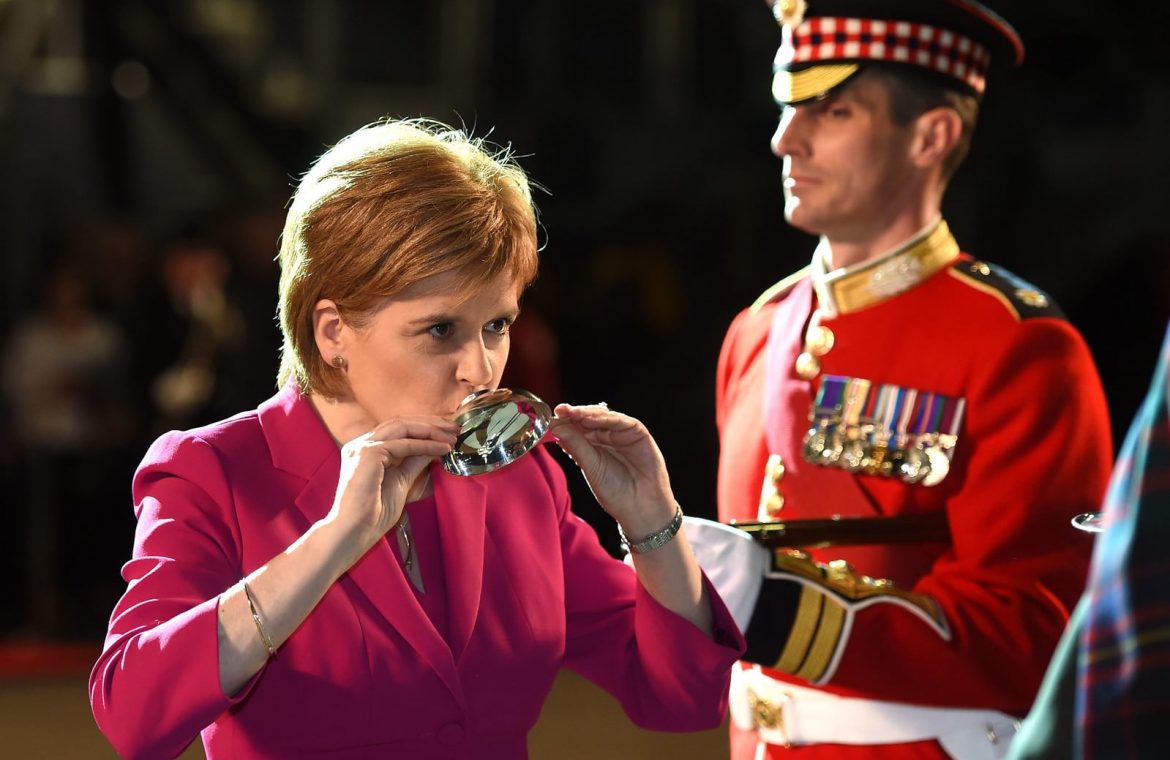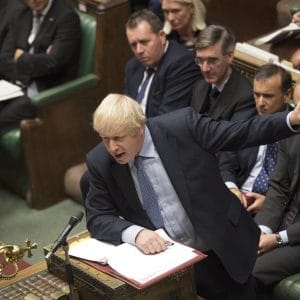In general, nowhere is it written that a referendum is needed to leave the UK – after all, the UK does not have a codified constitution. In theory, Scotland, like many of the colonies and dominance of the British Empire, could unilaterally and legally declare independence. But he won’t – here’s why.
On Friday, what has been said since the Scottish local elections was officially confirmed. The Scottish National Party and the Green Party reached an agreement on a semi-joint agreement. This means that the cooperation of the two parties will take place only in the areas covered by the agreement, and not on the basis of a single government cabinet. The parties can act and vote differently on all other issues.
Two leaders of the Green Party are likely to join the government as deputy ministers. In turn, the Greens support the Scottish National Party in voting on a vote of confidence and on bills covered by the agreement. Thus, Scotland will once again have a majority government led by the Scottish National Party and First Minister Nicola Sturgeon.
The Scottish National Party ruled the run up to the post as a minority, with quiet support from the Green Party. Perhaps not much will change in this. Contrary to appearances, the agreement between the two parties is very limited. she has 50 page document It contains six thematic chapters covering many, but not all, of the powers of the Scottish Government in Holyrood.
Neither side was prepared for far-reaching declarations or compromises. As mentioned by one of the leading green duo, Patrick Harvey, The deal will collapse once one party demands the “impossible” from the other.
Scotland has chosen a strong and independent parliament. Will sturgeon try to hold a referendum?
Read also
Taxes and independence are enough in peace
Interestingly, a referendum to separate Scotland from the United Kingdom was pledged during this parliamentary period, but was in no way specified in the agreement among other declarations. Along with other promises, it is included in the chapter on democratizing Scotland, increasing voter turnout and promising to return to the European Union if the country gains independence. There were also promises to establish citizens’ councils to reform key areas of development and change in the country. Interesting facts: As part of raising the international reputation of Scotland, the coalition parties have pledged to open representative offices of the Scottish government in Copenhagen and … Warsaw, to promote the country among the citizens of Scandinavia and Central Europe.
Of course, the remaining issues covered by the agreement relate to the climate crisis, post-pandemic recovery, equalizing inequality, reforming public services and protecting the environment. In these areas, it is clear that there is still a lot between the two extremes.
The Green Party is more radical. It can be read between the lines that in several places they had to agree on more than they wanted. The decidedly slow shift away from oil and gas production in the North Sea, where the SNP has long seen the backbone of an independent Scotland’s budget in the future, is something the Greens on the left are already criticizing for. That promise of investing just £500m in the North West to mitigate the effects of the relocation in a region hard hit by a potential fossil fuel transition will not be tempered by that.
The agreement also includes much about equal opportunities, collective housing, education reform, and benefits and allowances, so that they better support the development of children from disadvantaged regions and families.
Surprisingly, health care and tax issues are avoided. This is probably due to the serious differences in the two sides’ approach to these issues. The SNP is an economically more liberal party than the Green Party, and its electoral base is undoubtedly more economically conservative than the green electorate of the big city. The SNP’s electorate is also very diverse, but a large portion of it sticks to the party because of the promise to strive for Scottish independence.
It is possible that these differences in the electoral structures of both parties are the reason why a formal governing coalition between the SNP and the Greens cannot be formed. In a mask of near-parity, neither side will have to make solutions that would attract a significant portion of its electorate.
It is impossible to predict today how this will affect the stability of cooperation between partners. On the one hand, the Greens do not hold full ministerial positions and will not have to take responsibility for the balance sheet to govern sturgeon, but on the other hand, it cannot be excluded that the SNP will count on the support of the Greens also in those areas which are not covered by the agreements, but are necessary to govern the country Which is really easier to fall into politically. Such a possibility of glossing over responsibility would surely be in the hands of the Sturgeon Party, which has already ruled Scotland for a fourth consecutive term.
Read also
What’s next for the referendum?
In theory, the deal is clear – the Greens and the Scottish National Party will hold a referendum In five years, maybe by 2023. But in practice, it is very complicated.
Officially, the only body empowered to decide on constitutional matters in the UK is Parliament in London. And the London government, by a parliamentary majority, could temporarily concede this right to the Scottish government, as it was before. The first independence referendum in 2014. As long as Westminster is ruled by the Conservatives – especially the Conservatives with Prime Minister Boris Johnson, who is very unpopular in Scotland – it is enough that they do not give the Scots permission to declare another referendum. It seems For now, that’s what their plan boils down to.
However, this picture can be more complex. In general, there is nowhere to say that a referendum is needed to leave the UK – after all, the UK does not have a codified constitution.
Yes, it has become a habit to hold referendums on important domestic issues, and they have already been held in Northern Ireland, Scotland, Gibraltar, the Falkland Islands, etc., but if so, in Scotland, modeled after dozens of colonies and the dominance of the British Empire and It can, in theory, unilaterally and legally declare independence.
Of course, the SNP and the Greens are unlikely to want to do this, as that would risk image disaster. They can try it Forcing London’s approval of the referendum through the courtsHe is not a loser. Furthermore, there are no binding referendums in the kingdom, so the SNP might argue that a Scottish referendum is a ballot rather than a vote.
However, stuffing the referendum promise more deeply into the quasi-partnership agreement is also important. This may indicate that the updated Sturgeon government will not rush to it quickly and at all costs. One reason for this is the improvement in the UK’s image after the success of the national immunization program against COVID-19. While the Westminster government had an appalling record in Scotland during the disaster that swept the country through the pandemic, and support for independence rose dramatically, UK ratings rose sharply after the success of AstraZeneca. Almost half of Scots want to stay in the UK.
The radical left must go. As in England, the red wall collapses and the conservatives win
Read also
At the same time, the SNP has to deal with growing criticism within Scotland itself. It’s scored because of its unimpressive achievements in education or healthcare – just two areas where they don’t have to consult London and have almost full power. So both parties that make up the new Scottish government must first show that they can respond to the fundamental problems of their country, if they are to win a future independence referendum.
Yellowish green or yellowish green
In fact, no one had a much-needed partnership agreement.
The SNP can continue to rule in a minority, as in the previous period, by extracting the necessary votes from other parties in specified votes or by buying them with concessions in matters of individual programmes. In other cases, such as condemning the retention of British nuclear weapons in Scotland, they can count on the impartial support of almost everyone.
However, it appears that the SNP wants to green its image, particularly in opposition to the Prime Minister of the entire kingdom, Boris Johnson, who has declared that That Nicola Sturgeon shouldn’t be ‘close’ to the top of COP26After all, it takes place in her hometown of Glasgow. And since the plans of the Johnson government, as you know, are as coherent and deliberate as in any other field – that is, not at all – it would not be difficult for the SNP to present itself as a genuine opposition and a reasonable alternative to the London government.
Scotland: First a declaration of union, then a referendum on independence
Read also
On the other hand, the Greens clearly want to leave the party standing on one cause and show themselves as a responsible political force, capable of taking the reins of the state if necessary. And also to emphasize the pro-independence part of your program. Especially since this new quasi-legal alliance has 55 percent in parliament. Places represent the majority of the country’s population.
Regardless of the short-term political gains, both parties want Scotland to be positioned more as a Scandinavian country than Britain in the long-run. The program presented in their quasi-coalition agreement is a step in that direction. It is also a step towards crafting a Scottish identity as a positive project, and not just in negative opposition to the English and their dominant government in London.

“Proud creator. Amateur music junkie. Tv scholar. Web fan. Lifelong alcohol lover. Falls down a lot. Hardcore thinker.”










